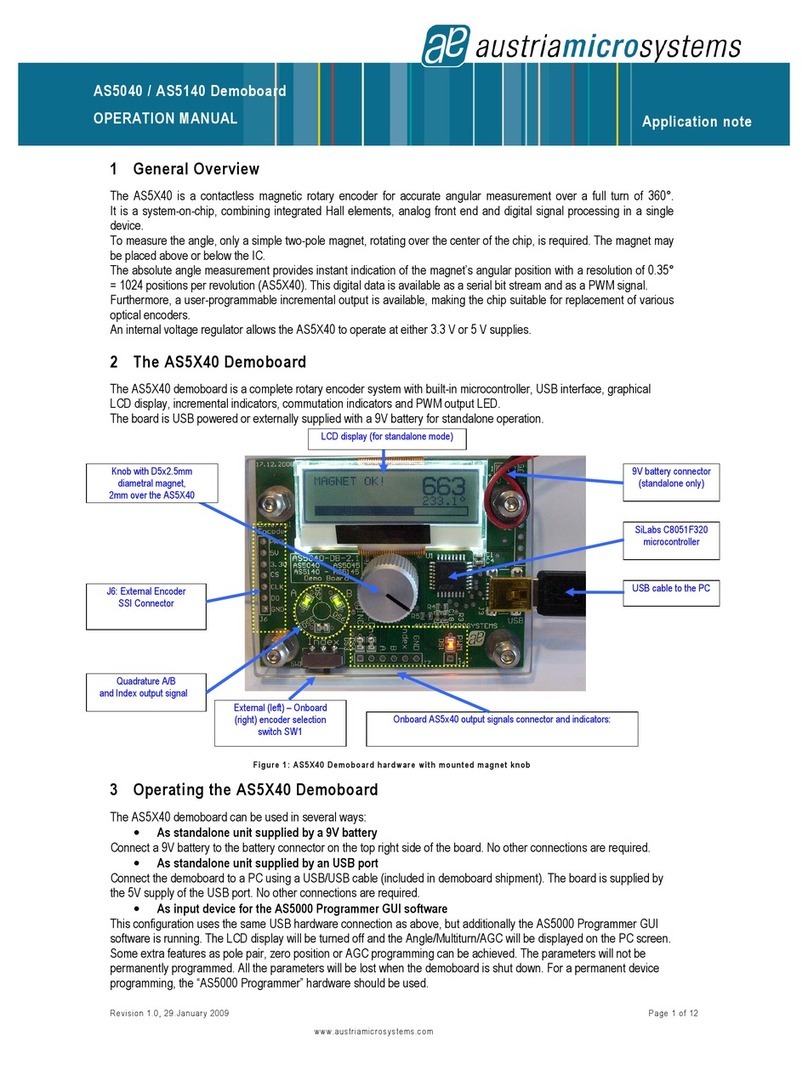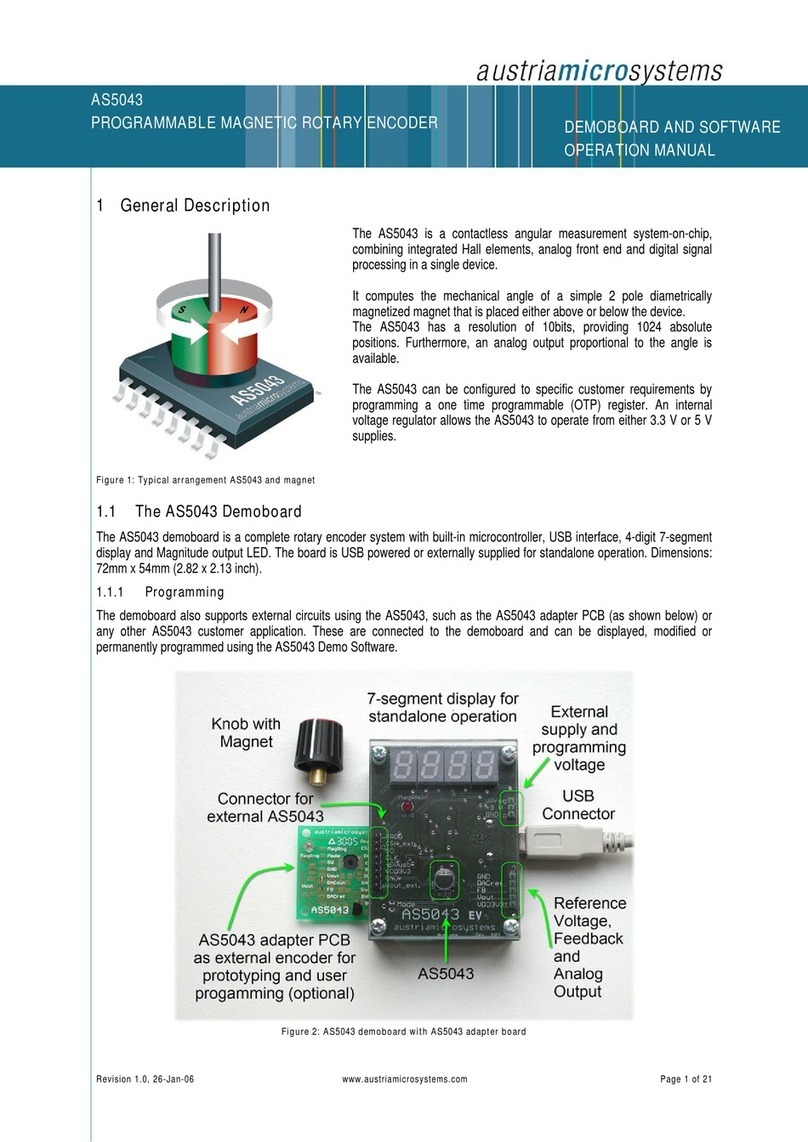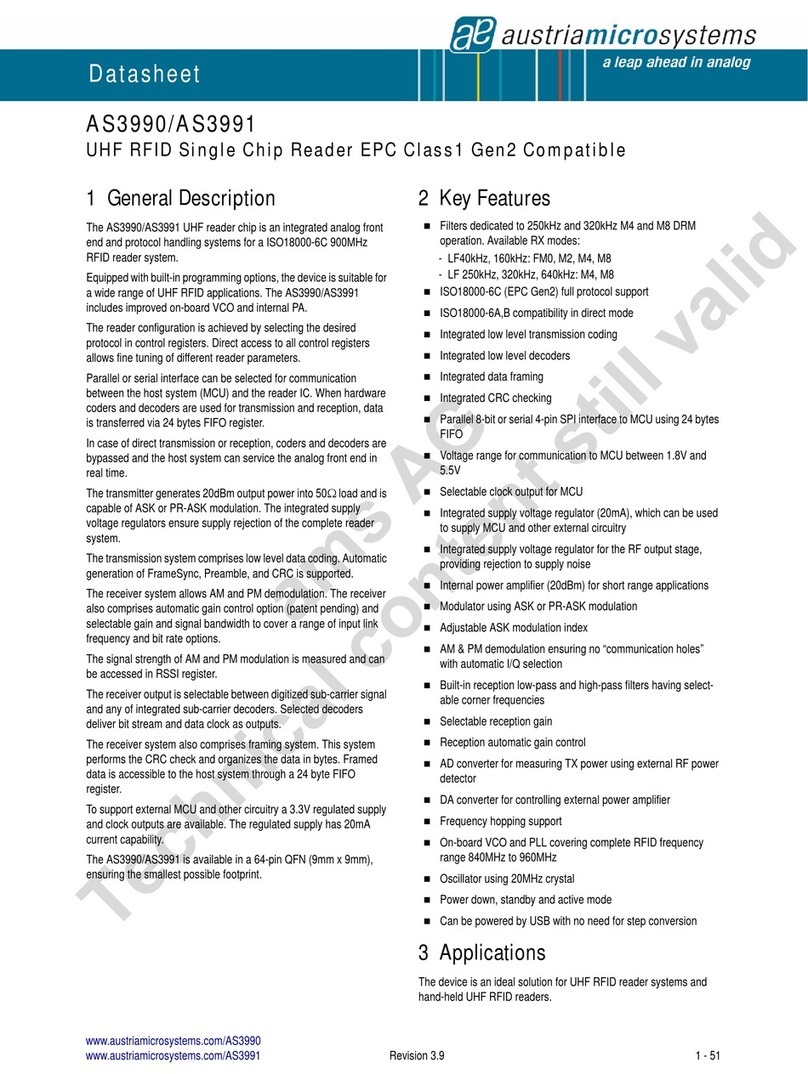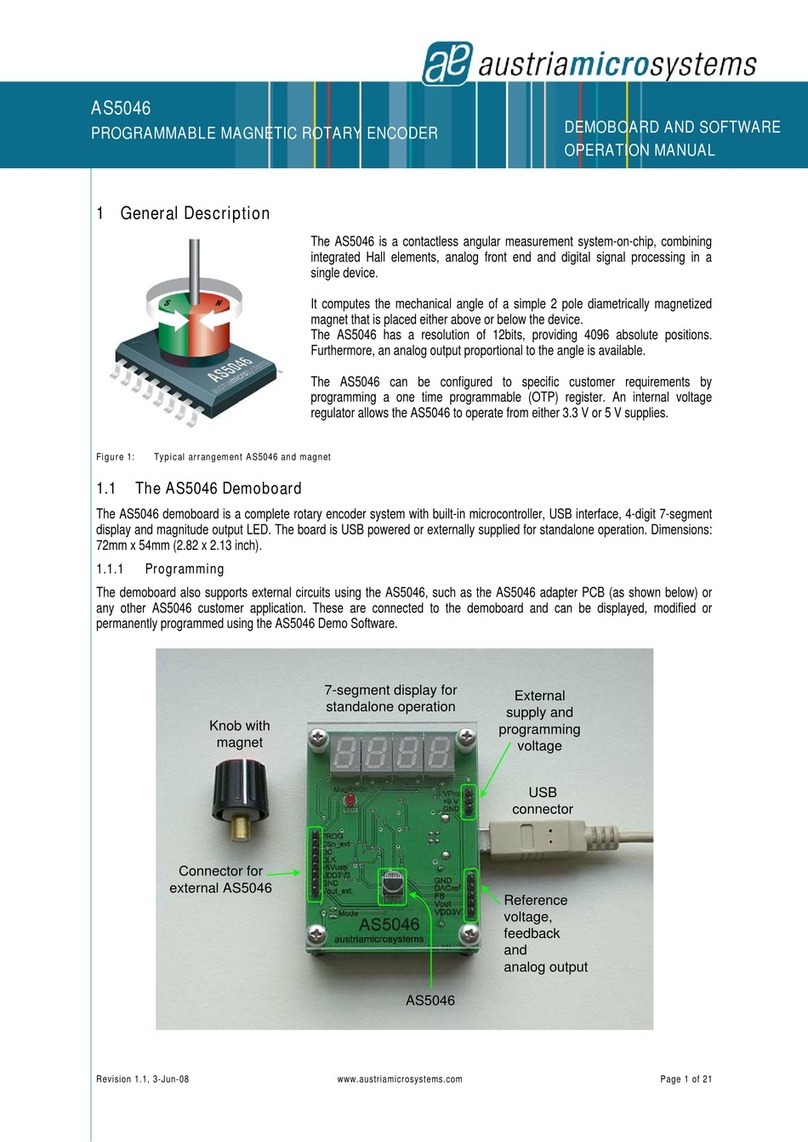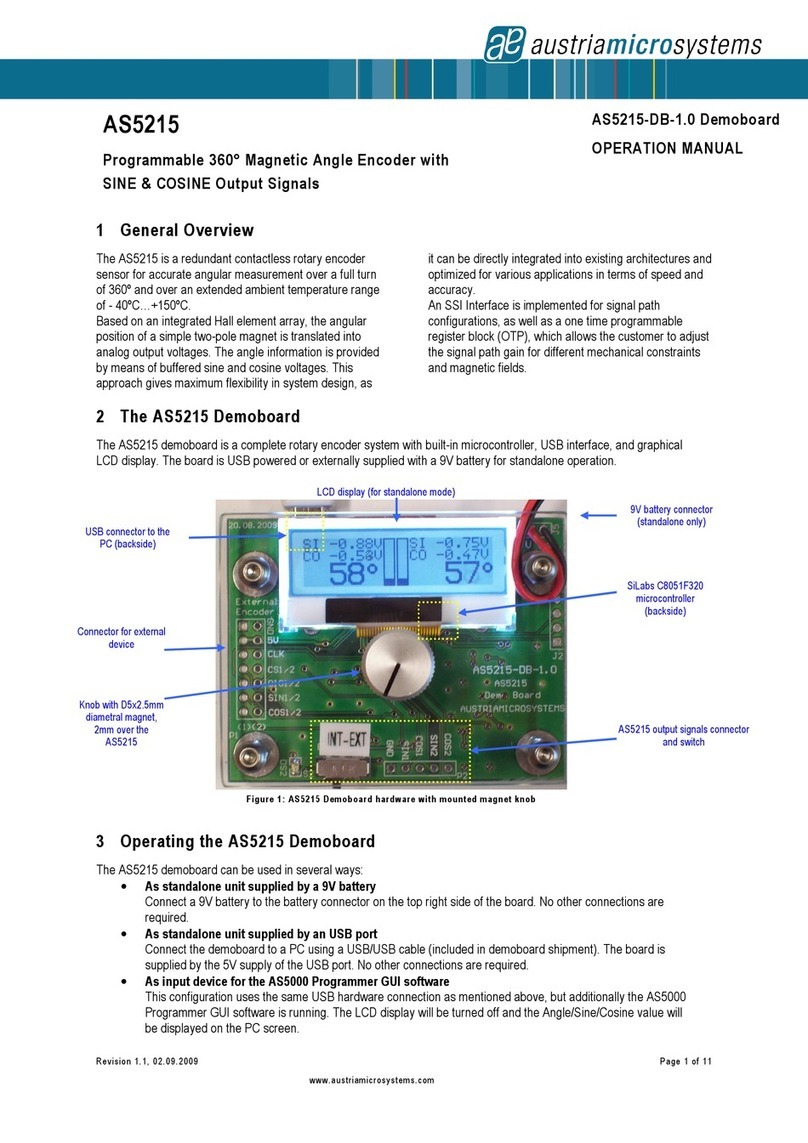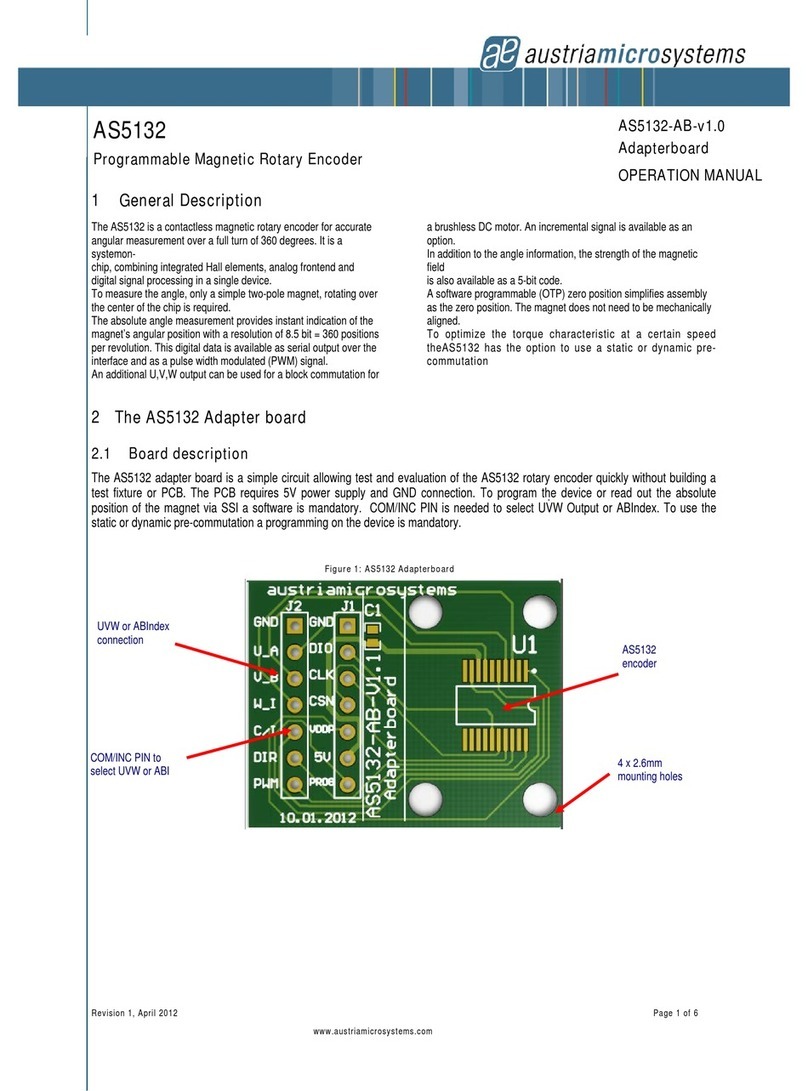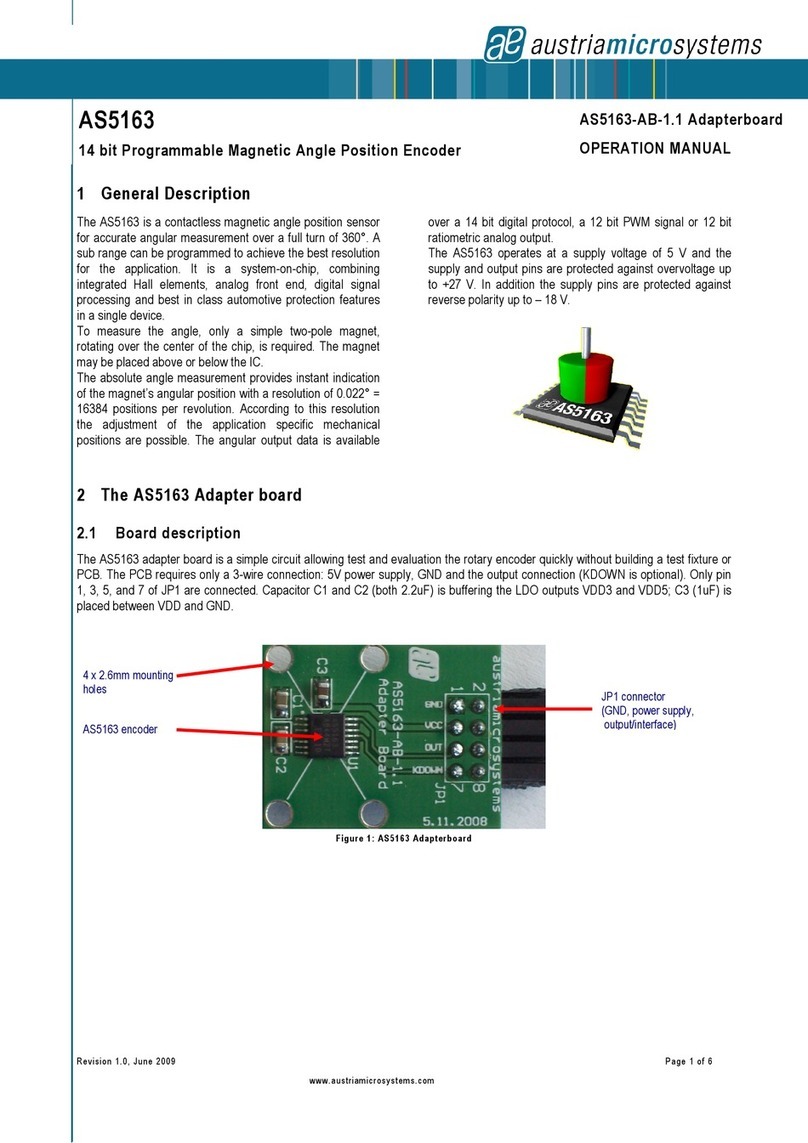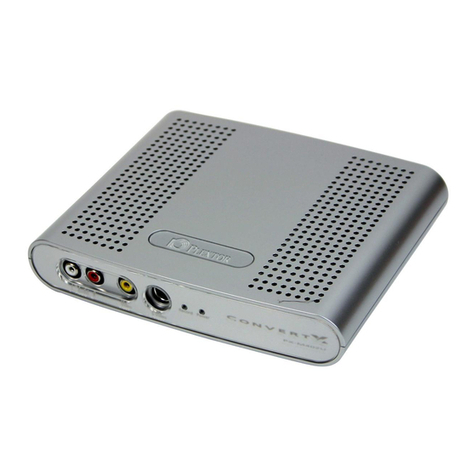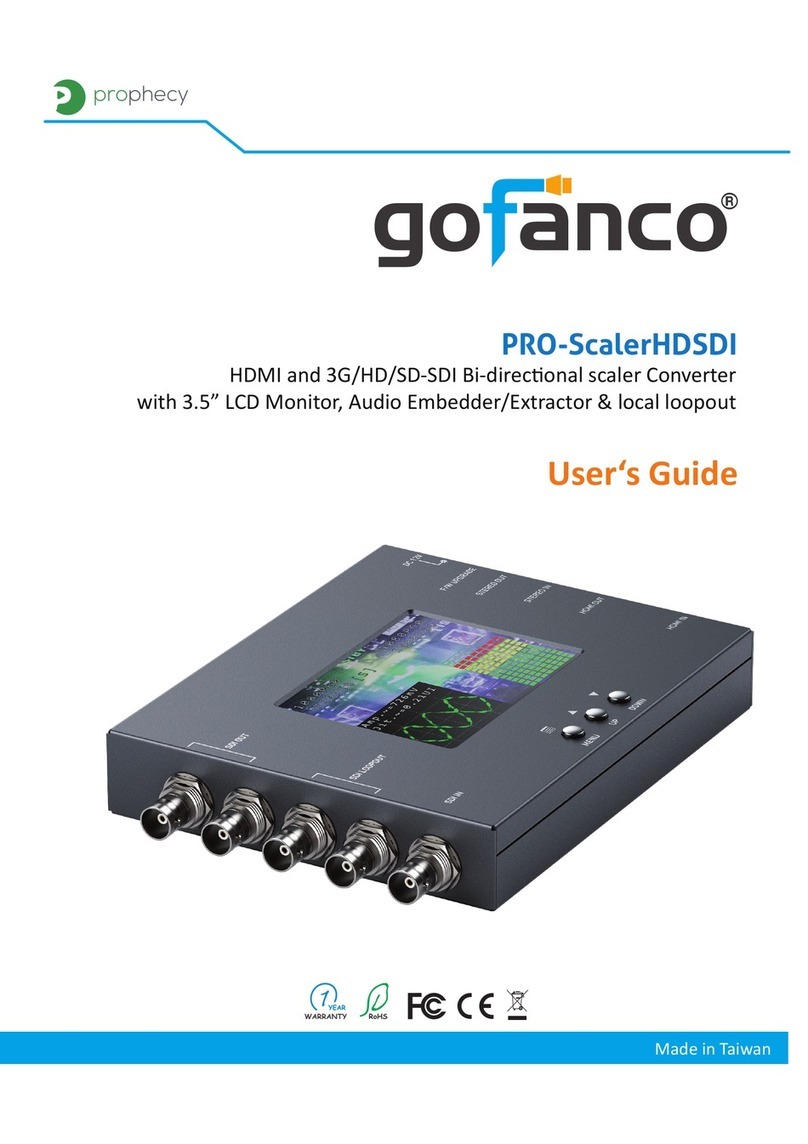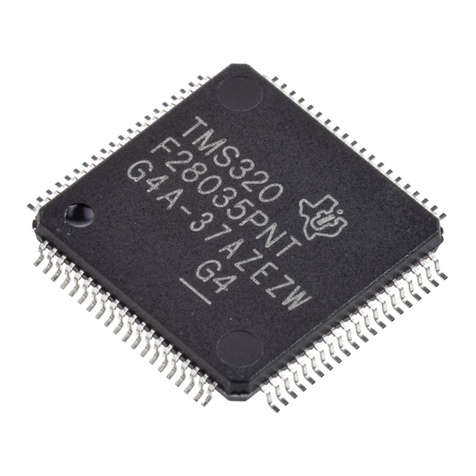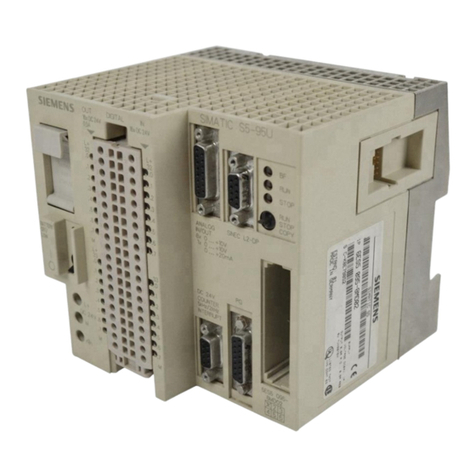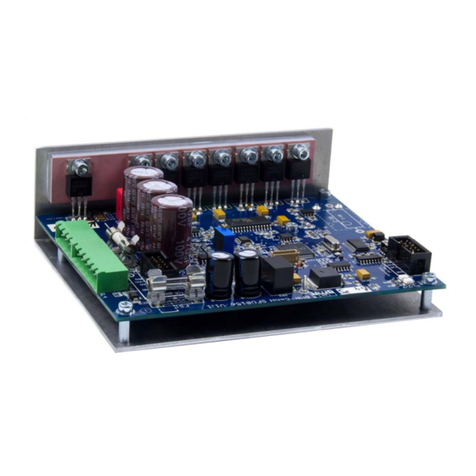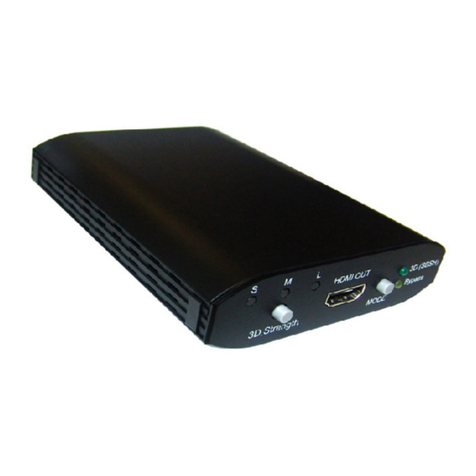
AS5045 12-BIT PROGRAMMABLE MAGNETIC ROTARY ENCODER
Demoboard Operation Manual
Revision 1.1, 04 Jul-06 www.austriamicrosystems.com Page 2 of 20
2Operating the AS5045 Demoboard
The AS5045 demoboard can be used in several ways:
As standalone unit supplied by a 9V-battery
Connect a 9V…12V supply to pins "GND" and "+9V" at the right side of the board. No other connections are required
As standalone unit supplied by an USB port
Connect the demoboard to a PC using a USB/USB cable (included in demoboard shipment). The board is supplied by
the 5V supply of the USB port. No other connections are required
As input device for the AS5045 demoboard software
This configuration uses the same USB hardware connection as above, but additionally the AS5045 demoboard software
is running. All indicators on the demoboard will be displayed on the PC screen as well.
2.1 Hardware Indicators
Refer to Figure 2:
2.1.1 7-Segment Display
The 4-digit display shows the absolute angle position of the magnet as a 10bit digital word (0…1023). Each digit corresponds
to (360/1024) = 0.35 degrees.
Note: The absolute position is monitored continuously. It does not require moving the magnet to a zero position before it can
calculate the absolute position. When power is lost (e.g. when you unplug the demoboard and re-connect it), it will instantly
display the correct position.
2.1.2 PWM LED
This LED is connected to the PWM output of the AS5045. The
PWM output is a pulse width that is proportional to the angle of
the magnet.
The pulse width varies from 1µs to 1024µs with a repetition rate
of 0.976 kHz.
Viewing the PWM signal on a LED results in a brightness that is
proportional to the angle of the magnet. When the angle of the
magnet is at 0 degrees, the LED is almost dark, as it is 1µs on
and 1024µs off. Turning the knob clockwise towards higher
angles increases the brightness of the PWM LED, since the on-
pulse becomes longer and the off-pulse becomes shorter.
Likewise, the PWM output can be used as an analog output
proportional to angle, when the PWM signal is filtered by a RC
(or active) lowpass filter.
Figure 3: PWM signal waveform with default OTP setting.
2.1.3 Mode LED
Applying Vdd to the Mode pin of the demoboard (J1, Pin3) will deactivate the internal filter and the Mode LED will be lit.
The mode input pin activates or deactivates an internal filter used to reduce the analog output noise.
Activating the filter (Mode pin = LOW or open) provides a reduced output noise of 0.03° rms. At the same time, the output
delay is increased to 384µs. This mode is recommended for high precision, low speed applications.
Deactivating the filter (Mode pin = HIGH) reduces the output delay to 96µs and provides an output noise of 0.06° rms. This
mode is recommended for higher speed applications.
Switching the Mode pin affects the following parameters:
Parameter slow mode (Mode = low or open) fast mode (Mode = high, VDD5V)
sampling rate 2.61 kHz (384 µs) 10.42 kHz (96µs)
transition noise (1 sigma) ≤0.03° rms ≤0.06° rms
output delay 384µs 96µs
max. speed @ 4096 samples/sec.
max. speed @ 1024 samples/sec.
max. speed @ 256 samples/sec.
38 rpm
153 rpm
610 rpm
153 rpm
610 rpm
2442 rpm
Table 1: Slow and fast mode parameters
1/fPWM
Angle
359.91 deg
(Pos 4095)
0 deg
(Pos 0)
1µs 4097µs
PWMIN
PWMAX
4096µs




















